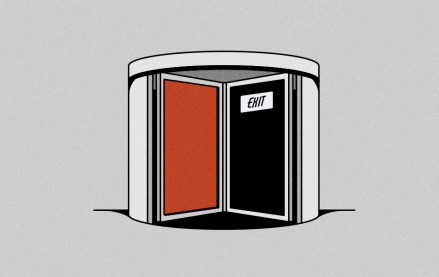Why price cuts and agency pressure haven’t changed calculus for brands on X

Despite the carrot and stick tactics deployed by Elon Musk’s X to cajole advertisers back on to its platform, big brands still aren’t buying in.
In the math used by marketers and media buyers to decide whether a social platform is worth their investment, X remains on the wrong side of the abacus.
According to eMarketer, X revenues (including subscription and ad income) will rise to $2.3 billion this year; higher than last year’s $1.9 billion, but still far less than its pre-acquisition income.
Most of its biggest ad customers haven’t yet returned; according to Sensor Tower, 66 out of the top 100 spending U.S. advertisers on X prior to the 2022 acquisition weren’t spending on the platform in March. Meanwhile, the big brands that have returned to the platform, like American Express, are putting in only 20% of their previous investment.
It’s not for lack of trying.
In February, The Wall Street Journal reported that X’s leadership allegedly pressured Interpublic Group executives to spend more with the platform, implying that failure to do so would bring interference with the agency group’s proposed merger with Omnicom. According to one highly-placed source at IPG who spoke on condition of anonymity, the holding company “finalized arrangements” with X to avoid scrutiny from the House Judiciary Committee.
Separately, in first quarter of this year, X was offering Omnicom Media Group clients a variety of discounts. According to internal agency documents seen by Digiday, they included 50% free inventory added to investments of up to $200,000 for new brands, as well as 15% off takeover placements and additional incentives for clients buying takeover products upfront.
Such incentives are “nice to have, but not actually that useful,” to advertisers not already on the platform, according to a holding company media buyer who exchanged candor for anonymity. (An X spokesperson did not respond to request for comment prior to publication.)
Most of the industry’s big holding companies have access to a similar menu of incentives, or are in the process of procuring one, per Financial Times reporting, while indie media buyers also maintain ties to the platform. So, why aren’t more of their clients taking those deals?
To understand why more brands aren’t seriously reconsidering X, it’s useful to quickly examine how they actually choose between platforms in the media planning process.
So, how do marketers and buyers choose platforms?
X’s efforts to win back advertisers have been directed principally at agency media buyers, hoping they’ll recommend its media inventory to clients. “X has been basically on fire sale since Elon Musk took over,” said Darren D’Altorio, head of social at Wpromote.
But agencies are ultimately “agnostic” about which platforms are the right ones for a client brief, noted Meagan Traver, director of paid social at Dept.
When they’re deliberating if a social platform — Facebook, Instagram, TikTok, LinkedIn X, Snapchat, Reddit or Pinterest — is suitable for a client’s brief, agencies weigh a number of different factors. Firstly, they look at whether a platform has enough of a client’s target audience under its roof. Brian Levine, director of social media at media agency Converge, calls this “audience alignment.”
Next, there’s performance. Is it the best place to put those dollars to chase those web users? For clients pursuing higher-funnel activity, agencies will monitor brand awareness metrics. On lower-funnel work, they’ll look at how the platform has impacted cost-per-acquisition and incremental sales — indicators that can be compared across platforms.
“The places where we can get the lowest cost [and the] highest incrementality are where we’re generally going to invest,” said Sam Huston, Dept’s svp of creative and media.
Agencies will often look to a client’s previous experience with a platform, or to data gleaned from past campaigns with other clients in similar categories, to guide their hand prior to an investment.
That’s not to say price is the be all and end all. “We prioritize platforms that can deliver the desired results within a reasonable cost structure, rather than simply opting for the cheapest option,” said Levine in an email. “Ultimately, the platform assessment weighs these factors against campaign objectives.”
How heavily does brand safety weigh on marketers’ minds?
Brand safety concerns do feature in conversations. X’s For You feed offers users a rich tapestry of political screeds, combat footage and posts promoting “passive income” training courses that will teach you how to start a business jetwashing driveways in the suburbs.
But buyers credit X’s in-house brand safety tools with being as good as its peer platforms — which wasn’t always the case after Musk purchased it. And there are further measures buyers might take to shield a brand. D’Altorio said his agency recommended brands steer clear of in-feed ad placements, and instead prioritize pre-roll video inventory because it carried less risk of association with the surrounding content. “We’re basically boxing out that ad buy in every way we can,” he said.
The reason X isn’t garnering a greater place on brand media plans is due less to brand safety concerns, and ultimately because its audience and performance chops aren’t up to scratch. ”You’re not going there for sheer volume,” said Swapnil Patel, managing director at McKinney.
In Wpromote’s case, D’Altorio noted that only three clients out of its hundred-strong roster currently spent on the platform. “The ultimate decision tends to fall that… [it] is not the next best place to spend a dollar,” he said.
Similarly, Patel said two financial services clients of McKinney were active on the platform, but that it only represented a “moderate” 15% of their paid social spend.
It seems X has exchanged the pariah status it held immediately after Musk’s acquisition, for a pigeonhole on media plans. “X definitely has its time and place,” said Travers, before adding that it’s “not one of my go to platforms.”
Entertainment and media brands, including movie studios, accounted for 24% of U.S. spending on X in Q1, according to Sensor Tower estimates. So, marketers courting sports fans, Hollywood stans, financial services consumers (the platform still has the ability to move markets) and cryptocurrency enthusiasts will find their mark there.
But advertisers outside that group still treat it as an afterthought, discounts or no.
“If a conversation isn’t already happening, then an incentive is unlikely to get that conversation started,” concluded the anonymous buyer.
— Michael Bürgi contributed to this story.
More in Marketing

Pitch deck: How Amazon is recasting Twitch as a core part of its CTV pitch
Amazon is positioning Twitch as a defining asset in its CTV ambitions.

Netflix transforms former mall department stores into experiential venues
The location in Dallas opens this week, and one at the King of Prussia mall near Philadelphia opened last month.

Future of Marketing Briefing: AI has created a new talent paradox in programmatic agencies
The job isn’t execution anymore. AI handles that. The job is judgement.








